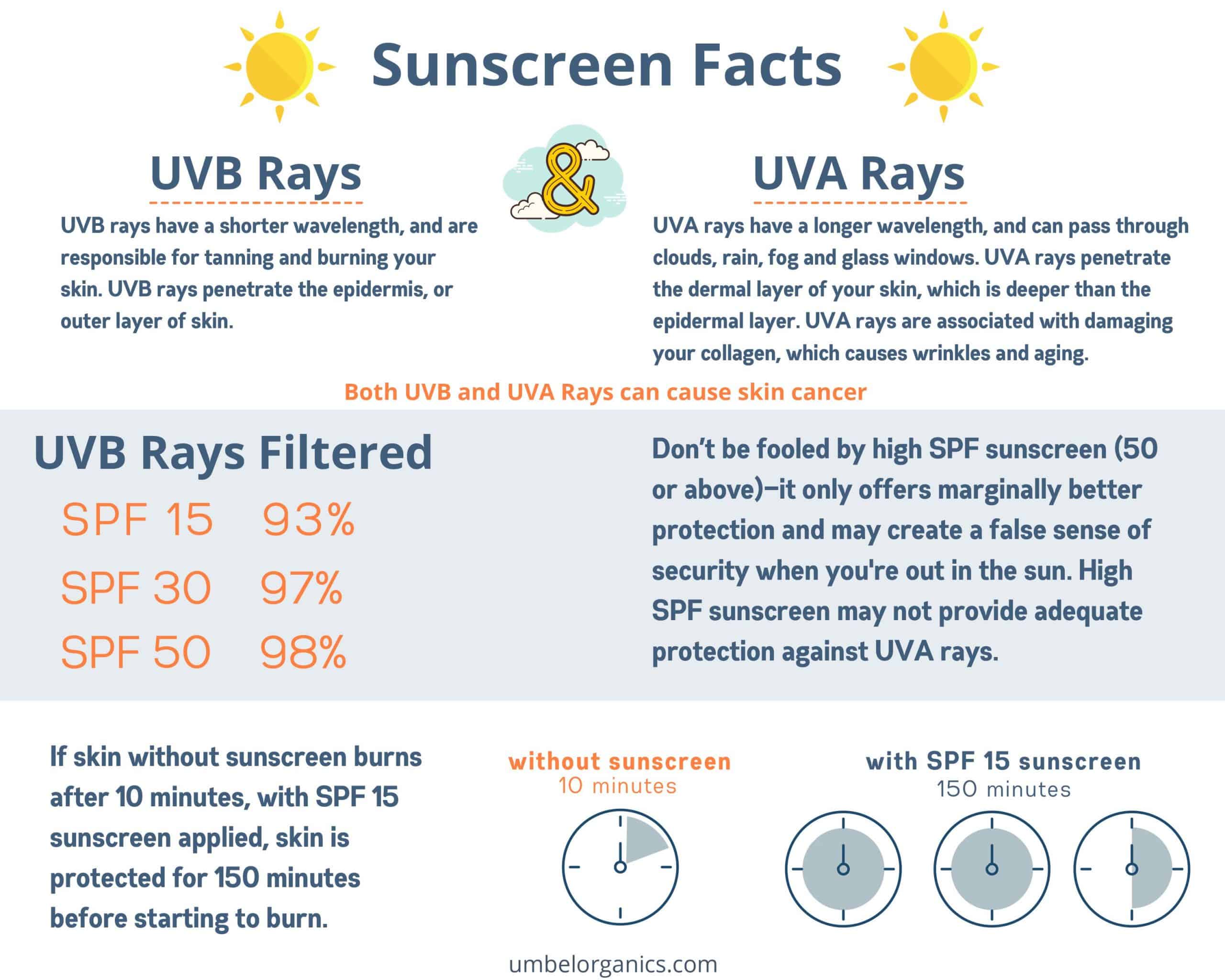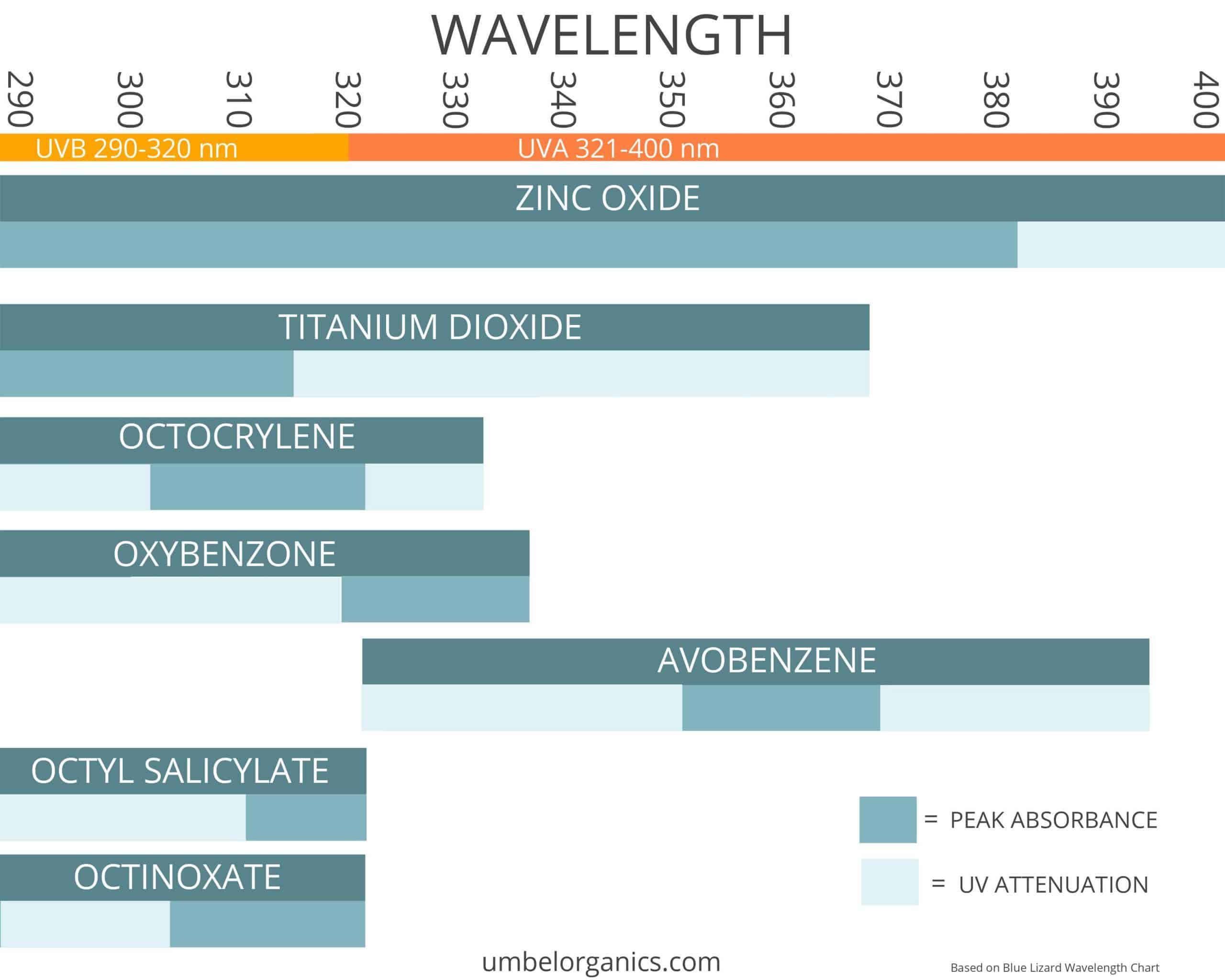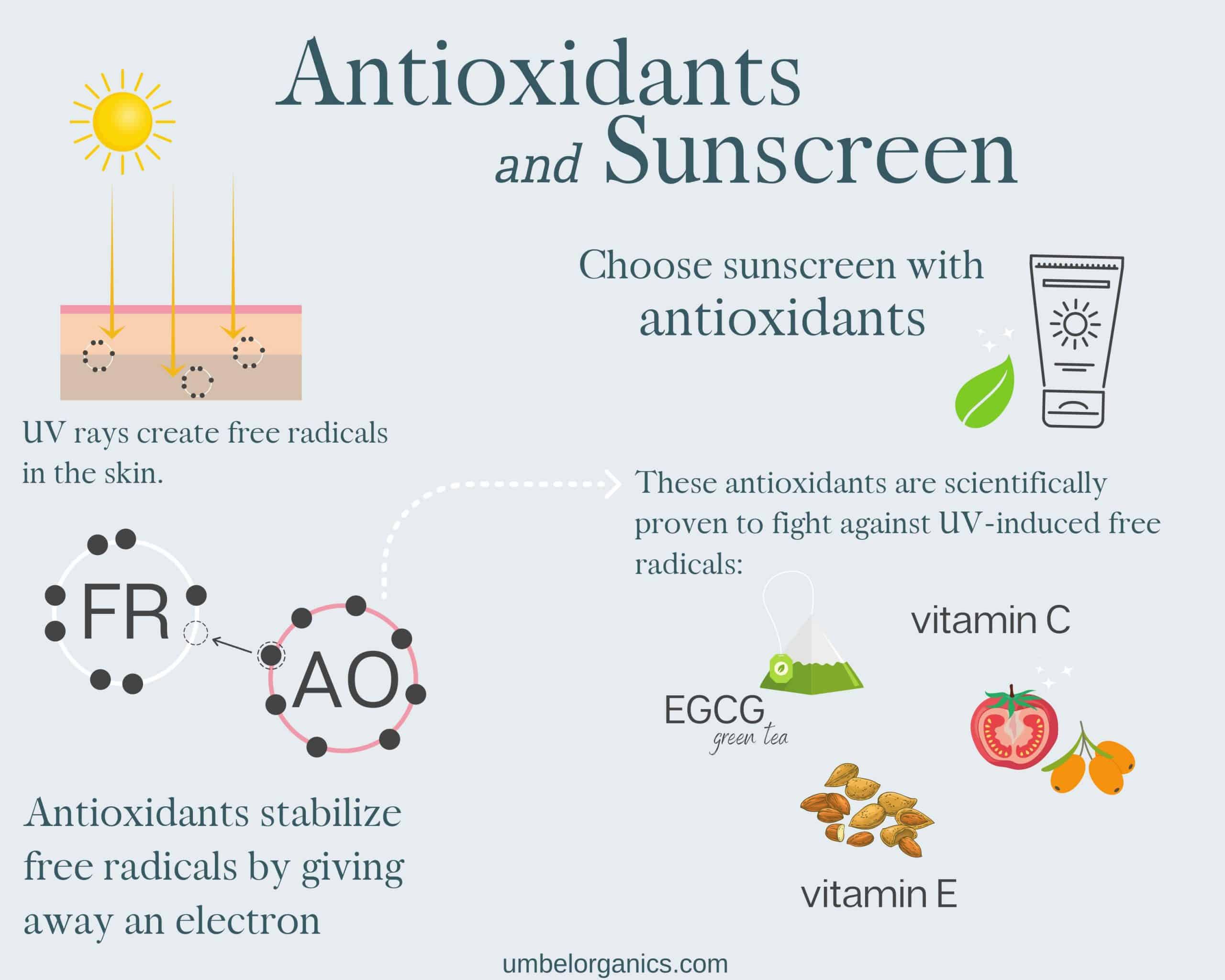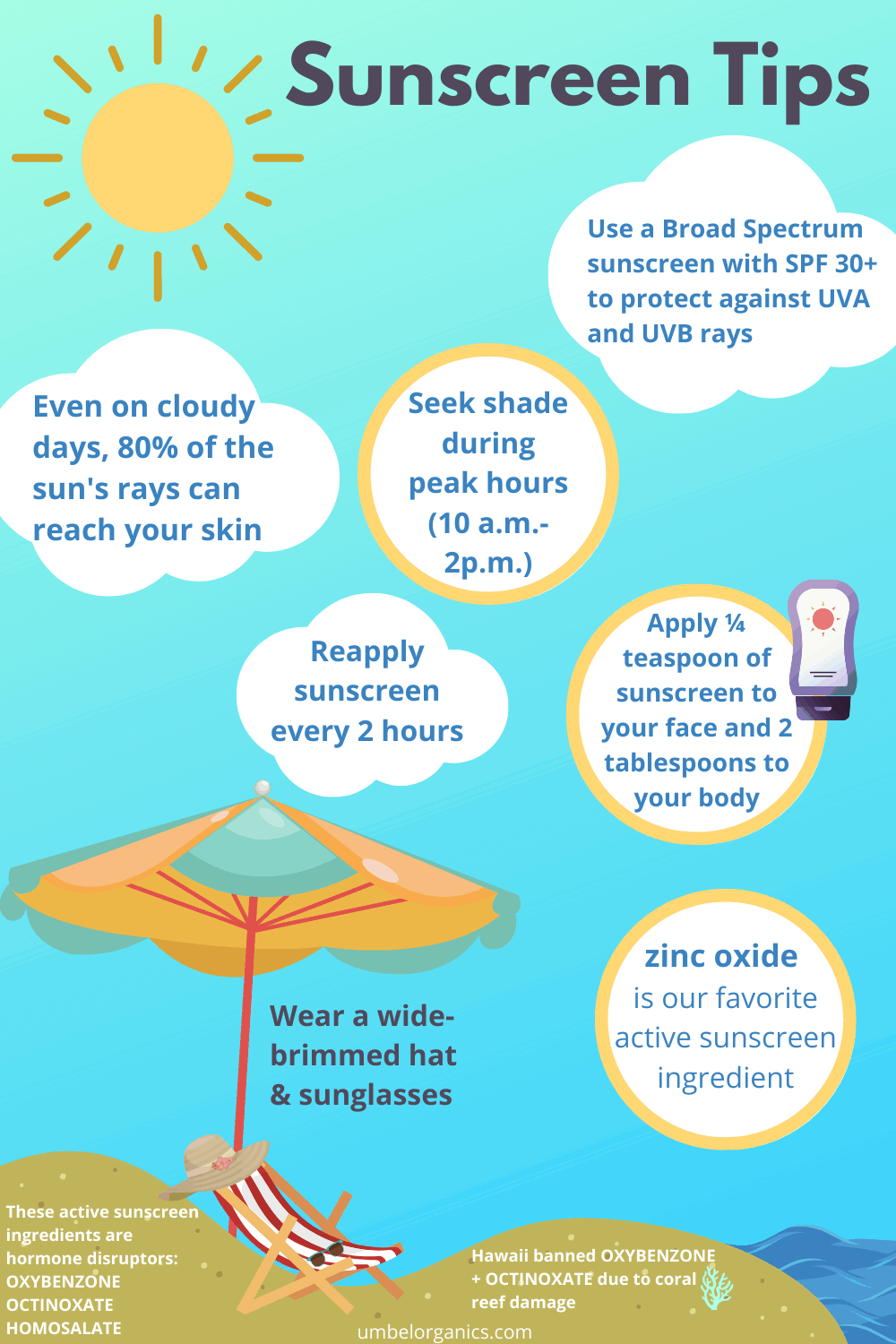Everything You Want To Know About Mineral Sunscreen
What’s in your sunscreen? In this guide to mineral sunscreen, we cover everything you need to know about mineral sunscreen formulation—from what harmful ingredients to avoid to what ingredients to look for in sunscreen. If you want the facts on mineral versus chemical sunscreen and what you need to protect your skin from UV rays, this mineral sunscreen guide is the perfect place to start.

Up until my mid-twenties, I was a true sun worshipper. I slathered on baby oil and Coppertone and sunbathed like it was my job. So it was no surprise that unwanted sun spots started appearing on my face. I tried every drugstore brand to cover up my melasma, but nothing would stay put all day. My quest for the perfect cover up led me to Nordstrom, where a chance encounter with a very knowledgeable cosmetic saleswomen changed my whole perspective on tanning.
The woman who helped me was shocked at how tan my face was. She pulled out a fancy face scanner and had me place my face close up as the machine did its work. Scanned images of my face revealed big black areas of deep and widespread sun damage. UV rays damage the collagen in your skin, causing wrinkles and sagging.
The woman behind the counter talked with me about broad spectrum sunscreen, sunglasses, big hat and seeking shade during peak sun hours (thank you, kind woman, whoever you are out there). I’ve been following her advice ever since (the FDA also recommends these steps for sun protection).
My whole perspective on tanning changed, and I got pretty serious about wearing sunscreen. This post is part 1 of my natural sunscreen guide, and covers a lot of information about sunscreen. I have recommendations for mineral sunscreen for the face, mineral sunscreen for the whole family and lip balm with mineral SPF. Let’s start with the sunscreen basics:
What Are UVA And UVB Rays?
UVA and UVB rays are the two types of ultraviolet radiation that reach the earth’s surface. Both UVA and UVB rays can cause skin cancer.
UVB rays have a shorter wavelength, and are responsible for tanning and burning your skin. UVB rays penetrate the epidermis, or outer layer of skin.
UVA rays have a longer wavelength, and can pass through clouds, rain, fog and glass windows. UVA rays penetrate the dermal layer of your skin, which is deeper than the epidermal layer. UVA rays are associated with damaging your collagen, which causes wrinkles and aging.
What Is SPF Factor In Sunscreen?
Sun protection factor (SPF) measures the amount of UVB protection a sunscreen has. SPF ratings do not measure how well a product protects against UVA rays. The SPF factor indicates the length of time it takes skin with properly applied sunscreen to redden when exposed to UVB rays as compared to the time it takes non-sunscreened skin to redden with exposure to UVB rays.
As an example, if bare (no sunscreen) skin burns after 10 minutes, with SPF 15 sunscreen applied, skin is protected for 150 minutes before your skin starts to burn.
What Does Broad Spectrum Mean?
Broad spectrum sunscreen protects from both UVB and UVA rays. The American Academy of Dermatology recommends using broad spectrum sunscreen of SPF 30 or higher. In order for a sunscreen to be considered broad spectrum in the USA, it must pass the Critical Wavelength test (1). The critical wavelength is the wavelength at which sunscreen allows 10% of the rays to penetrate (370nm). The test compares the relative protection of UVB versus UVA.

What Is Physical Or Mineral Sunscreen
Physical sunscreen is also referred to as mineral sunscreen. Physical sunscreens include the active ingredients zinc oxide and titanium dioxide. Physical sunscreen sits on the top layer of your skin, and both absorbs and scatters UV radiation (2). For a biochemist’s explanation on how zinc oxide absorbs in the UV range, read more at Kabana Sunscreen. Cosmetic chemist Stephen Ko also has an in-depth explanation on how zinc oxide behaves in the UV range.
Zinc oxide is one of the most effective sun protectors available, blocking out both short and long wave UVA rays and all UVB rays. Microfine zinc oxide is also photostable and does not degrade when exposed to sunlight (3).
Titanium dioxide is extremely effective at blocking short-wave UVA and UVB. Including zinc oxide as an active ingredient in your physical sunscreen will ensure broad spectrum protection (4). Some sunscreen brands, like Babo Botanicals, use a combination of zinc oxide and titanium dioxide to boost sun protection factor.
At this time, the FDA (the Food and Drug Administration of the USA) recognizes Zinc Oxide and Titanium Dioxide as the only safe and effective active ingredients in sunscreen. If you’re concerned about zinc oxide or titanium dioxide entering your bloodstream, scientific studies have demonstrated that these particles do not penetrate beyond the top layer of skin (5, 6).
As a general rule of thumb, physical sunscreen is gentler on the skin than chemical sunscreen, making it a good choice for sensitive skin. It’s also less likely to clog your pores than chemical sunscreen. The National Eczema Association recommends physical sunscreen for people with eczema.
What Is Chemical Sunscreen?
Chemical Sunscreens are absorbed into your skin. They work by converting UV rays into heat and dissipating the heat from your skin.
IS CHEMICAL SUNSCREEN SAFE?
Since chemical sunscreen is absorbed through the skin, it can gain entry into your bloodstream. In a 2020 study on chemical sunscreen ingredients, plasma concentration levels of the active sunscreen ingredients avobenzone, oxybenzone, octocrylene, homosalate, octisalate, and octinoxate were measured in study participants after sunscreen application. The levels of all 6 active sunscreen ingredients exceeded the threshold established by the FDA. Not only were these chemicals present right after application, they remained in the body for extended periods of time (7).
Currently, the FDA recommends further study on the safety and efficacy of the 12 following SPF ingredients: cinoxate, dioxybenzone, ensulizole, homosalate, meradimate, octinoxate, octisalate, octocrylene, padimate O, sulisobenzone, oxybenzone, and avobenzone. Under proposed FDA guidelines, the active ingredients aminobenzoic acid (PABA) and trolamine salicylate would not be considered safe to use.
The active sunscreen ingredients oxybenzone, octinoxate and homosalate are established endocrine disruptors (8, 9). Endocrine disruptors have adverse effects on hormone function and human reproduction (10, 11).
Some ingredients in sunscreen can have deleterious effects on our aquatic ecosystem. In 2018, Hawaii passed legislation that restricts the use of personal care products containing oxybenzone and octinoxate, based on an association between the banned ingredients and damage to coral reefs.
Are your active chemical sunscreen ingredients photostable? If a sunscreen ingredient is not photostable, the protective properties start to diminish and become less effective in the presence of sunlight, therefore not adequately providing the UV protection you’re relying on it for (12). Avobenzone is one example of a sunscreen ingredient that is not photostable. When octinoxate is combined with avobenzone, this combination causes a breakdown of both chemicals as well as the formation of damaging free radicals (13).

What’s The Best Active Ingredient For Sunscreen?
From my research on chemical versus physical sunscreen and the fact that a sunscreen needs an active ingredient with both UVA and UVB protection, zinc oxide comes out the clear winner.
Does Percent Zinc In Physical Sunscreen Matter?
It was hard to get a straight answer, but here’s what I found:
Sunscreen can achieve an SPF of 30 with varying percentages of zinc oxide. Every zinc oxide sunscreen formulation varies, from the size of the zinc oxide particles to whether or not the zinc particles are coated to the thickness of the formula and the added inactive ingredients. One school of thought is that if a sunscreen passes the broad spectrum critical wavelength test and goes through rigorous SPF testing, all is good no matter what the zinc oxide percentage is.
BUT, SPF value measures UVB rays, not UVA rays. Although a broad spectrum sunscreen protects against UVA rays, it does not measure exactly how much UVA protection is offered (this is a great graphic). Remember the critical wavelength test a sunscreen must pass in order to have a broad spectrum label? This test is not representative of a sunscreen’s actual protective UVA capabilities.
The Sunscreen Doc recommends 20% zinc oxide in sunscreen to give you complete UVA and UVB protection. Physical sunscreen that contains between 15 and 20 percent zinc oxide should also contain at least 7.5% titanium dioxide to achieve an SPF 30 with adequate UVA protection.
From personal experience living in Colorado, a high altitude, sunny state, I apply a sunscreen with a high percentage of zinc oxide (20% or above) and reapply every 2 hours if I’m out skiing or hiking. This is enough to keep my skin from burning. I’ve used many sunscreen brands with a lower zinc oxide percentage and have gotten sunburned. If I’m working from home and running a quick errand, I can get away with wearing sunscreen with a lower percent zinc oxide.
What Are Nanoparticle, Non-Nano, Micronized & Coated Zinc Oxide?
- Nano = a particle smaller than 100 nanometers (0.1 micron).
- Non-nano = a particle with a diameter larger than 100 nanometers.
- Micronized Zinc = Large zinc particles are reduced into smaller ones, measuring between 0.1 and 100 microns. The process of micronization can create nanoparticles. If you’re concerned about nanoparticles, contact the company that makes your sunscreen. Your sunscreen company should be able to provide you with particle size.
- Coated Zinc = Zinc oxide nanoparticles are coated with silicones or other occlusive agents so they stay on the surface of your skin and are less photoreactive.
Safety of Nano sized zinc oxide particles Larger particles of zinc oxide and titanium dioxide make your skin look white (think lifeguard with white nose). As mentioned above, physical sunscreen can be made more transparent by grinding down the zinc or titanium into microscopic (nano) particles. The concern is that these nano particles absorb into the body and enter the bloodstream, but scientific studies have demonstrated that nano zinc oxide particles do not penetrate beyond the top layer of skin (14, 15).
However, when it comes to the aquatic ecosystem, nano-sized zinc oxide and titanium dioxide threaten the health of coral reef and marine wildlife.
Active Versus Inactive Ingredients
Active ingredients are the UV Filters in the sunscreen. They are usually listed above all of the other ingredients. Inactive ingredients are the carrier lotions that are formulated to work with the UV filters.
Inactive Ingredients To Avoid
- Fragrance (parfum)– Personal care products can list fragrance as one ingredient and don’t have to disclose the fact that these formulations may contain hundreds of ingredients. Synthetic Fragrance may contain carcinogens, endocrine disruptors, allergens, respiratory irritants and neurotoxic chemicals (16).
- Parabens– Based on a study conducted at the University of California Berkeley, researchers found that parabens were able to stimulate breast cancer cell growth, even at concentrations 100 times lower than the natural growth factor heregulin. These findings suggest that paraben exposure doesn’t have to be high to lead to cancer growth (17).
- Polyethylene Glycol (PEG)– Polyethylene glycol is used to make lotion thicker and better able to transport moisture to the skin. The manufacturing process can introduce impurities and by-products, such as ethylene oxides and 1,4-dioxane, which are known carcinogenic materials (18).
What To Look For In Inactive Ingredients
Sunscreen doesn’t block 100% of UV rays. Adding antioxidants to a sunscreen formulation can provide a second line of protection, secondary photoprotection, for your skin (19).
Free radicals are created when UVA rays enter the skin. These free radicals can damage cells and DNA, causing collagen to break down. Antioxidants clean up free radicals and stop the free radical cascade that ultimately breaks down collagen (20). The addition of antioxidants to sunscreen can reduce free radical production from visible light by up to 78% (21).
In a 2015 study, researchers found that sunscreen enriched with antioxidants effectively protected skin against infrared radiation, whereas non-enriched sunscreen did not achieve proper infrared photoprotection (22).
Antioxidants that are scientifically proven to fight against UV-induced free radicals include:
- Vitamin C acts to protect against UV- damage, which results in sunburn and erythema (23).
- Vitamin E has many protective actions, such as decreasing immunosuppression, erythema, photoaging, and photocarcinogenesis (24).
- Green tea polyphenols (EGCG) contain antioxidants that are more potent than vitamin C and E, and function to scavenge free radicals. They are anti-inflammatory and anti-carcinogenic (25).

How Much Sunscreen To Apply To Your Face?
Apply a quarter teaspoon of sunscreen to your face. SPF levels are tested on human subjects in a laboratory setting. A layer of sunscreen that covers 2mg per cm squared of facial skin is applied to each test subject (26). In reality, when you apply sunscreen to your face, you’re probably using a lot less than the amount used for the SPF testing. That means when you go out in the sun, your sunscreen may be less effective than the SPF on the label. To get as close as possible to the SPF on the sunscreen label, it needs to be applied at a similar density that was used for testing.
How Often To Reapply Sunscreen?
Reapply sunscreen every 2 hours, no matter what the SPF is. Sunscreen rubs off by sweating, wiping, rubbing, and eating. If you’ve been swimming or sweating vigorously, reapply sunscreen right after. You probably aren’t applying as much sunscreen as you should be anyway, so reapplication every 2 hours gives you the UV protection you really need.
Do I Have To Wear Sunscreen On Cloudy Days?
Yes! Even when it’s cloudy, up to 80 percent of the sun’s UV radiation reaches the earth. Going unprotected on an overcast day can lead to skin damage.
Safety Of Spray Sunscreen
I don’t recommend using spray sunscreen. Not only is spray application of sunscreen less effective than lotion, but you risk inhaling sunscreen particles.
How To Store Sunscreen & Expiration Date
Sunscreen does expire, and it can break down if kept in a hot car. If your sunscreen is more than a year old, I would toss it, even if it hasn’t expired. Don’t use your sunscreen if the color or consistency has changed.
Blue Light And Skin Aging
Blue light, emitted from the sun and our electronic devices, has a wavelength range from about 380 to 500 nanometers. When skin is exposed to blue light, free radicals are generated (27), and daily exposure to blue light may accelerate aging (28, 29). Zinc oxide is one line of defense for protecting skin from blue light, since it reflects and scatters light in the visible range. Iron oxides in sunscreen or makeup also work to block blue light (30). Antioxidants added as inactive ingredients to sunscreen are key to neutralizing free radical damage generated from blue light (31).
Sunscreen And Sensitive Skin
Even if you go the all-natural sunscreen route, some sunscreen formulations can irritate sensitive skin. I have definitely found this to be the case. According to dermatologist Sharyn Laughlin, “Never use a product that contains lime or any citrus based essential oil during the day on sun exposed skin. Dermatologists frequently see what is called photodermatitis- the sudden appearance of brown streaks or spots when lime juice or extract on the skin is exposed to sun light. This pigmentation can take a long time to fade.”
In one study, oxypeucedanin, a compound found in lemon, lime and bitter orange oil, caused photopigmentation on colored-guinea-pig skin without preceding visible erythema (32).
Before you purchase a tube of sunscreen, I recommend looking at the active ingredients first. Make sure zinc oxide is on the active ingredient list. Always reapply sunscreen every 2 hours, no matter the SPF. Look for added antioxidants in the inactive ingredient list. Avoid added fragrance, and also avoid citrus-based essential oils.

More Clean Beauty Inspiration
References
- https://drdembny.com/critical-wavelength-and-broad-spectrum-uv-protection/
- Cole, C. et al. Metal oxide sunscreens protect skin by absorption, not by reflection or scattering. Photodermatol Photoimmunol Photomed. 2016 Jan;32(1):5-10. doi: 10.1111/phpp.12214. Epub 2015 Nov 10.
https://www.ncbi.nlm.nih.gov/pubmed/26431814 - Mitchnick, M.A., Fairhurst, D. and S.R. Pinnell. Microfine Zinc Oxide (Z-cote) as a Photostable UVA/UVB Sunblock Agent. J Am Acad Dermatol. 1999 Jan;40(1):85-90.
https://pubmed.ncbi.nlm.nih.gov/9922017/#:~:text=BACKGROUND%3A%20Microfine%20zinc%20oxide%20(Z,(340%2D400%20nm).&text=It%20is%20photostable%20and%20does%20not%20react%20with%20organic%20sunscreens%20under%20irradiation. - Beasley DG, Meyer TA. Characterization of the UVA protection provided by avobenzone, zinc oxide, and titanium dioxide in broad-spectrum sunscreen products. Am J Clin Dermatol. 2010;11(6):413‐421.
https://pubmed.ncbi.nlm.nih.gov/20806994/ - Leite-Silva, V.R. et al. Human skin penetration and local effects of topical nano zinc oxide after occlusion and barrier impairment. Eur J Pharm Biopharm. 2016 Jul;104:140-7. Epub 2016 Apr 27.
https://pubmed.ncbi.nlm.nih.gov/27131753/ - Mohammed, Y.H. et al. Support for the Safe Use of Zinc Oxide Nanoparticle Sunscreens: Lack of Skin Penetration or Cellular Toxicity after Repeated Application in Volunteers. J Invest Dermatol. 2019 Feb;139(2):308-315. doi: 10.1016/j.jid.2018.08.024. Epub 2018 Nov 15.
https://www.ncbi.nlm.nih.gov/pubmed/30448212 - Matta, M.K. et al. Effect of Sunscreen Application on Plasma Concentration of Sunscreen Active Ingredients. A Randomized Clinical Trial. JAMA. 2020;323(3):256-267.
https://jamanetwork.com/journals/jama/article-abstract/2759002?guestAccessKey=81a4a1e1-66d2-4f85-8d80-8d4d1aa1c56e&utm_source=For_The_Media&utm_medium=referral&utm_campaign=ftm_links&utm_content=tfl&utm_term=012120 - Maipais, S. and Nicolopoulou-Stamati, P. Sun lotion chemicals as endocrine disruptors. Hormones, 2015, 14 (1):32-46.
https://www.researchgate.net/publication/275049227_Sun_lotion_chemicals_as_endocrine_disruptors - https://www.ewg.org/sunscreen/report/the-trouble-with-sunscreen-chemicals/
- Bloom et al., Hum Reprod 2015; Buck Louis et al., Fertil Steril 2015. Associations between urinary phthalate concentrations and semen quality parameters in a general population.
https://www.ncbi.nlm.nih.gov/pmc/articles/PMC4605371/ - Life Study
https://www.nichd.nih.gov/about/org/diphr/od/research/longitudinal - Afonso S, Horita K, Sousa e Silva JP, et al. Photodegradation of avobenzone: stabilization effect of antioxidants. J Photochem Photobiol B. 2014;140:36‐40. https://pubmed.ncbi.nlm.nih.gov/25086322/
- Sayre RM, Dowdy JC, Gerwig AJ, Shields WJ, Lloyd RV. Unexpected photolysis of the sunscreen octinoxate in the presence of the sunscreen avobenzone. Photochem Photobiol. 2005;81(2):452‐456.
https://pubmed.ncbi.nlm.nih.gov/4096528/ - Leite-Silva, V.R. et al. Human skin penetration and local effects of topical nano zinc oxide after occlusion and barrier impairment. Eur J Pharm Biopharm. 2016 Jul;104:140-7. Epub 2016 Apr 27.
https://pubmed.ncbi.nlm.nih.gov/27131753/ - Mohammed, Y.H. et al. Support for the Safe Use of Zinc Oxide Nanoparticle Sunscreens: Lack of Skin Penetration or Cellular Toxicity after Repeated Application in Volunteers. J Invest Dermatol. 2019 Feb;139(2):308-315. doi: 10.1016/j.jid.2018.08.024. Epub 2018 Nov 15.
https://www.ncbi.nlm.nih.gov/pubmed/30448212 - Nudelman, J. and Engel, C. Right To Know. Exposing toxic fragrance chemicals in beauty, personal care and cleaning products. Breast Cancer Prevention Partners and Campaign For Safe Cosmetics. Sept. 2018.
https://d124kohvtzl951.cloudfront.net/wp-content/uploads/2018/09/26092837/BCPP_Right-To-Know-Report_Secret-Toxic-Fragrance-Ingredients_9_26_2018.pdf - Pan S, Yuan C, Tagmount A, Rudel RA, Ackerman JM, Yaswen P, Vulpe CD, Leitman DC. 2016. Parabens and human epidermal growth factor receptor ligand cross-talk in breast cancer cells. Environ Health Perspect 124:563–569; http://dx.doi.org/10.1289/ehp.1409200
https://ehp.niehs.nih.gov/doi/10.1289/ehp.1409200 - Jang, H.J. et al. Safety Evaluation of Polyethylene Glycol (PEG) Compounds for Cosmetic Use. Toxicol Res. 2015 Jun; 31(2): 105–136.
https://www.ncbi.nlm.nih.gov/pmc/articles/PMC4505343/ - Gabros, S. Sunscreens and Photoprotection. April 8, 2020.
https://www.ncbi.nlm.nih.gov/books/NBK537164/ - Monteiro e Silva, S.A., Michniak-Kohn, B. and Leonard, G.R. An overview about oxidation in clinical practice of skin aging. An Bras Dermatol. 2017 May-Jun; 92(3): 367–374.
https://www.ncbi.nlm.nih.gov/pmc/articles/PMC5514578/ - Leibel, F. et al. Irradiation of Skin with Visible Light Induces Reactive Oxygen Species and Matrix-Degrading Enzymes. Journal of Investigative Dermatology. Volume 132, Issue 7, July 2012, Pages 1901-1907.
https://www.sciencedirect.com/science/article/pii/S0022202X15358292 - Grether-Beck, S.; Marini, A.; Jaenicke, T.; Krutmann, J. Effective photoprotection of human skin against infrared A radiation by topically applied antioxidants: Results from a vehicle controlled, double-blind, randomized study. Photochem. Photobiol. 2015, 91, 248–250.
https://www.ncbi.nlm.nih.gov/pubmed/25349107 - Darr, D. et al. Effectiveness of Antioxidants (Vitamin C and E) With and Without Sunscreens as Topical Photoprotectants. Acta Derm Venereol. 1996 Jul;76(4):264-8.
https://pubmed.ncbi.nlm.nih.gov/8869680/ - Darr, D. et al. Effectiveness of Antioxidants (Vitamin C and E) With and Without Sunscreens as Topical Photoprotectants. Acta Derm Venereol. 1996 Jul;76(4):264-8.
https://pubmed.ncbi.nlm.nih.gov/8869680/ - White, P.O. et al. Protective Mechanisms of Green Tea Polyphenols in Skin. Oxid Med Cell Longev. Jun 26 2012.
https://www.ncbi.nlm.nih.gov/pmc/articles/PMC3390139/ - B Petersen & HC Wulk, Application of sunscreen – theory and reality, Photodermatol Photoimmunol Photomed 2014, 30, 96-101.
https://onlinelibrary.wiley.com/doi/full/10.1111/phpp.12099 - Vandersee, S., Beyer, M., Lademann, J. and M. Darvin. Blue-violet Light Irradiation Dose Dependently Decreases Carotenoids in Human Skin, Which Indicates the Generation of Free Radicals. Oxid Med Cell Longev. 2015: 579-675.
https://pubmed.ncbi.nlm.nih.gov/25741404/ - Nakashima Y, Ohta S, Wolf AM. Blue light-induced oxidative stress in live skin. Free Radic Biol Med. 2017 Jul;108:300-310. doi: 10.1016/j.freeradbiomed.2017.03.010. Epub 2017 Mar 15.
https://www.ncbi.nlm.nih.gov/pubmed/28315451 - Nash, T.R., Chow, E.S., Law, A.D. et al. Daily blue-light exposure shortens lifespan and causes brain neurodegeneration in Drosophila. npj Aging Mech Dis 5, 8 (2019).
https://www.nature.com/articles/s41514-019-0038-6#citeas - Ruvolo, E., Fair, M., Hutson, A. and F. Liebel. Photoprotection against visible light‐induced pigmentation. Int Journal of Cosmetic Science. 2018 Dec; 40:589-595.
https://onlinelibrary.wiley.com/doi/abs/10.1111/ics.12502 - Grether-Beck, S.; Marini, A.; Jaenicke, T.; Krutmann, J. Effective photoprotection of human skin against infrared A radiation by topically applied antioxidants: Results from a vehicle controlled, double-blind, randomized study. Photochem. Photobiol. 2015, 91, 248–250.
https://www.ncbi.nlm.nih.gov/pubmed/25349107 - Naganuma, M., Hirose, S., Nakayama, Y. et al. A Study of the Phototoxicity of Lemon Oil. Arch Dermatol Res. 1985;278(1):31-6.
https://pubmed.ncbi.nlm.nih.gov/4096528/
first image via depositphotos

